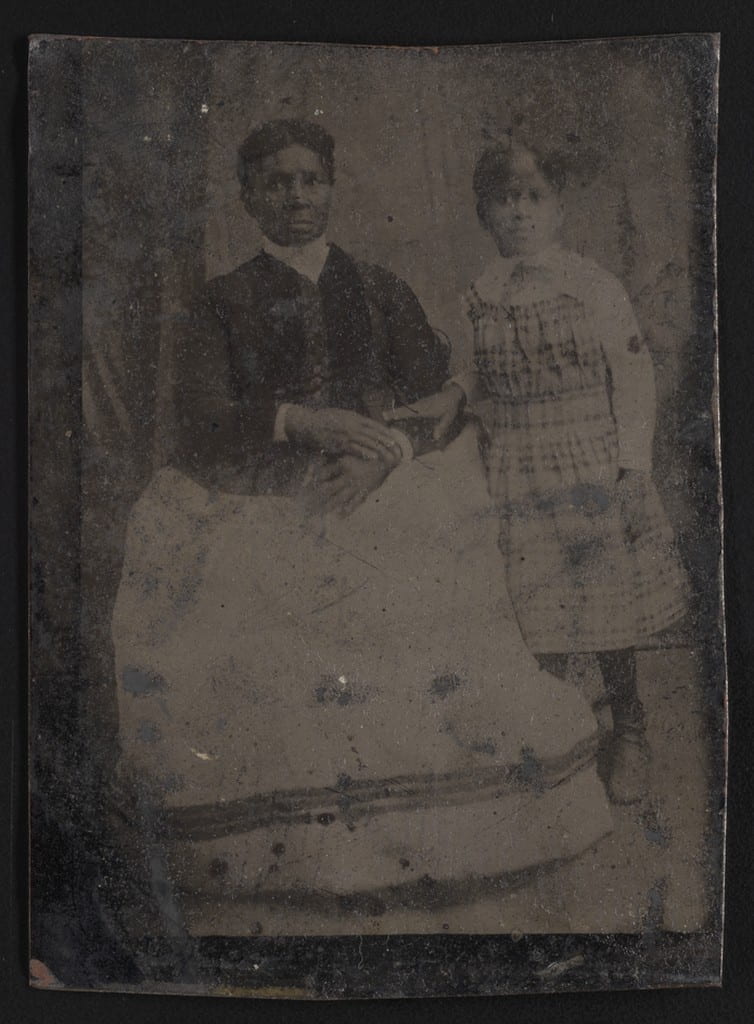
“A photograph is worth a thousand words.” However, the Black Portrait Photograph Collection currently has eleven photographs. In this case, a person could come up with at least 11,000 words for this collection. Photographs hold many purposes for people from identification, memory, intimacy, and many others.
The Black Portrait Photograph Collection was intentionally created by the University of Delaware’s Special Collections, which works together with the The Baltimore Collection. The collection represents that a life, even unknown, can live on through a photograph. Although the sixteen individuals within the eleven total photographs are currently unidentified, photography viewers are able to imagine what each person’s life might have been like based on their portraits. We do not know each individual’s personal history, story, or life, but we do know certain aspects and events of the mid-nineteenth through the early twentieth centuries which allows the viewer to draw historical contexts from the photographs and provide some information about how these sitters’ lives may have been.
Each sitter in the collection who had their photograph taken also has their “shadow” in that particular moment of their life saved in time. Their images have been preserved through photography and their identities can hopefully one day be reclaimed. Photography for a Black sitter makes a statement: I am here in the moment. I have existed. I am a person. I have a purpose. Historically, Black people are often overlooked and overshadowed by the white gaze. But photography allowed for Black people during the 19th century and today to have their shadows be representations and tell a partial story of their lives captured in a particular moment that shows their humanity. The Black Portrait Photograph Collection helps viewers to see Black people as beautiful and humane.
Sojourner Truth famously wrote on her portraits printed with the text: “I Sell the Shadow to Support the Substance.”[1] Although these sitters in the Black Portrait Photograph Collection may not have intentionally sought to commodify themselves, their recorded shadows did so through photography and certainly supported their representation of identity and self-fashioning. The individuals within the photographs as many people do when taking portrait photographs at supposed photography studios, more than likely consciously thought about what outfit and accessories they wanted to wear and why. Even if it may have been their best outfit that they owned or even borrowed at the time of the photograph being taken, there is a reason they decided to fashion themselves in more formal clothing styles instead of their everyday casual or work attire.

In this tintype photograph from the Black Portrait Photograph Collection of a seated woman and a standing child, the sitters were photographed most likely in a photography studio. The woman is dressed in a beautiful long and full skirt with a long sleeve vest and collar and her hair neatly pulled back. The child is wearing a nice dress with boots and her hair is neatly pulled back as well. Their hand placements, with the woman’s hands placed on her lap and the child’s softly resting on the woman’s lower arm, signify that they are probably relatives. The loving yet dignified pose of the individuals displays a sense of connection to one another. Their shadows within the photograph create parts of a narrative, even with very little information about the two sitters.
Like shadows, photographs also act as a mirror. Being able to see oneself looking back at them or another person captured in that moment, time, and space. This mirror effect differs from the shadow in that a shadow can be omnipresent and attached to a soul which lives on in that capacity. Whereas a mirror is more present, direct, and allows a person to confront whatever is in front of them in that exact moment. Photographs act as both a shadow and a mirror in those regards. A person can interact with an image of themselves that was taken just minutes ago, reminisce on a late memory, or have no knowledge of a person at all but their shadow is still in conversation with the viewer.
Danielle Bing, The Baltimore Collection: The Black Portrait Photograph Collection, May 2021.
[1] Wallace, Maurice O. and Shawn Michelle Smith. Pictures and Progress: Early Photography and the Making of African American Identity. Durham: Duke University Press, 2012.

